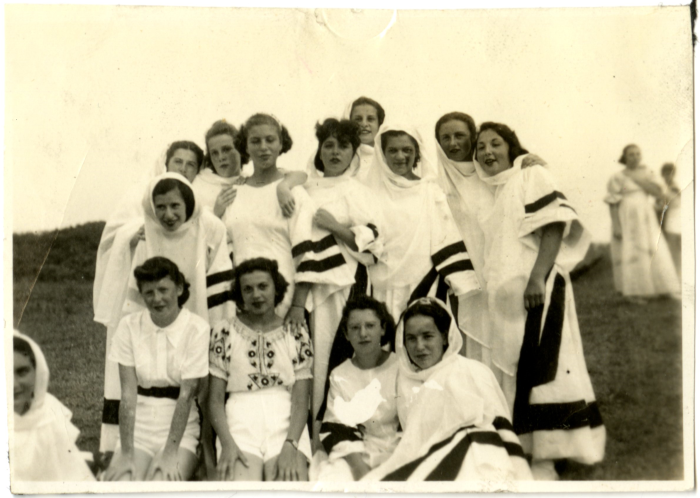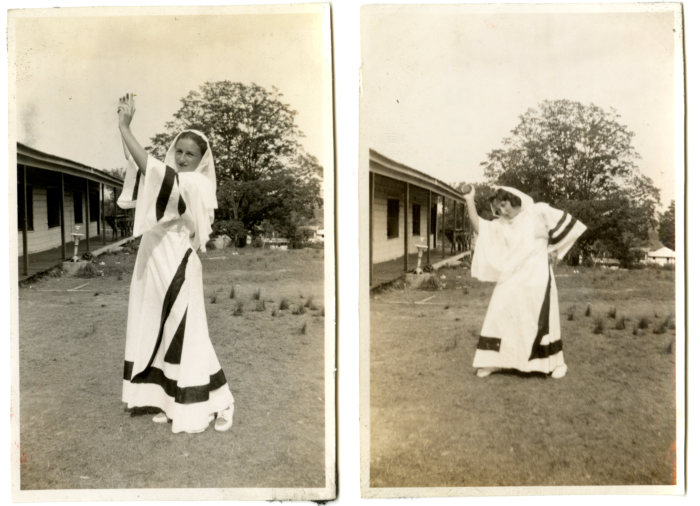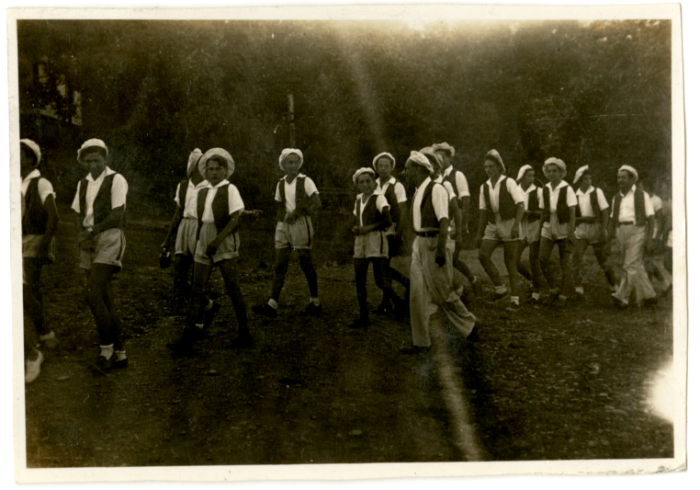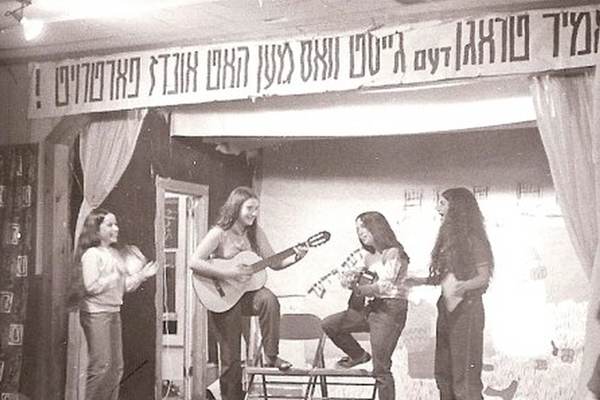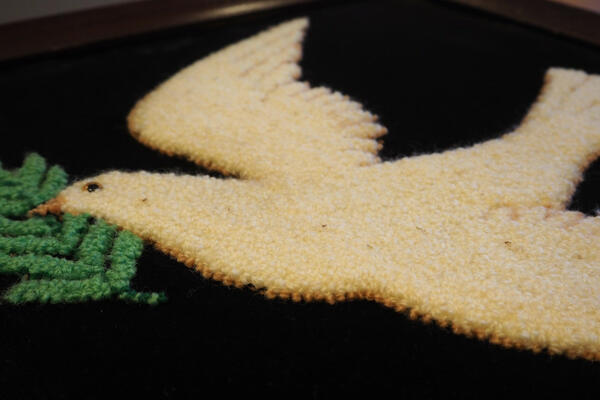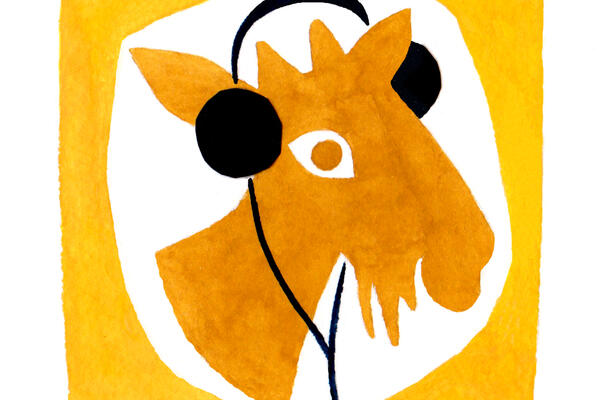Traces of Boiberik
Ephemera from the first Yiddish summer camp
The Yiddish poet Moyshe Nadir visited Camp Boiberik one summer in the late-1920s. According to his account, he spotted the following saying in the rec hall: “Leaving Boiberik without any Yiddish books is like being in Niagara without seeing the water.” Our collection here at the Center certainly supports this claim—pick up a book in the Center’s vault and you might find a Boiberik stamp!
Camp Boiberik, affiliated with the Sholem Aleichem Folk Schools, was the first Yiddish language summer camp in the U.S. Started in 1919 by writer and pedagogue Leibush Lehrer with a small group of campers, it moved in 1923 to Rhinebeck, New York, where it remained until the camp’s closure in 1979.
Over the years, in addition to donating their Yiddish books, Boiberikaner have visited the Center, become members, and shared photos. We recently came across two marks from Boiberik’s library in our collection. One is a simple stamp with the silhouette of a cabin surrounded by “Camp Boiberik.” The second is a pasted-in bookplate designed by Tsirl Waletzky. A central figure in the world of American-Yiddish folk art, Waletzky was also a committed Boiberikanerin who taught at the camp for many years. The bookplate features Boiberik’s emblem, the dove, diving towards a book lying open in the grass. Surrounding the book are more typical summer camp accessories: a tennis racket, a bat, and a baseball. Both are included on the front cover of the 1924 collection Lider by poet Nokhem Yud (pictured below).
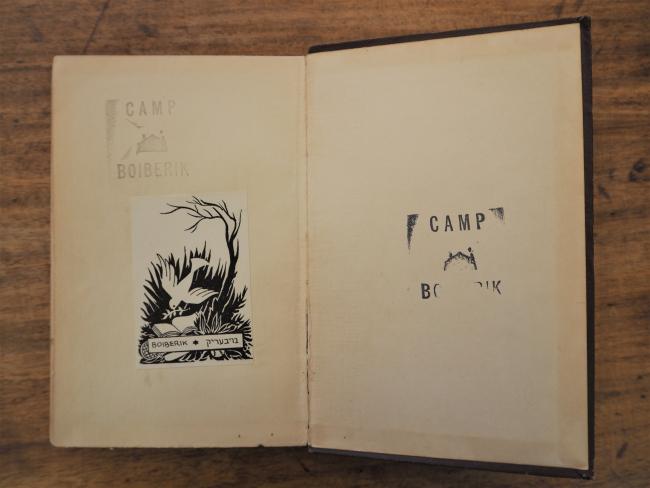
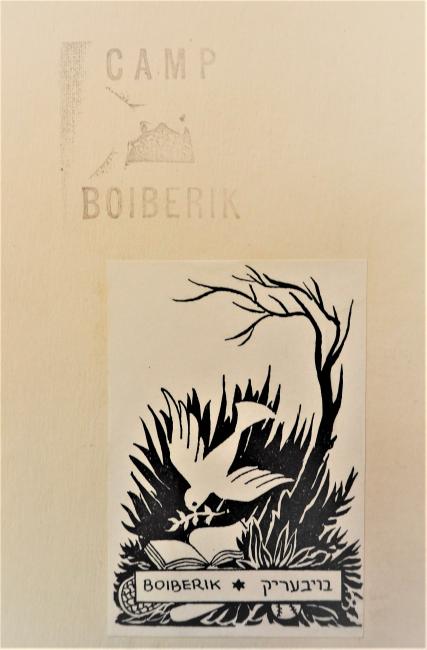
This same dove from the book plates, with its wings spread and a branch in its mouth, appears in this beautiful rug-punched wall-hanging that is a recent addition to the Center’s collection.
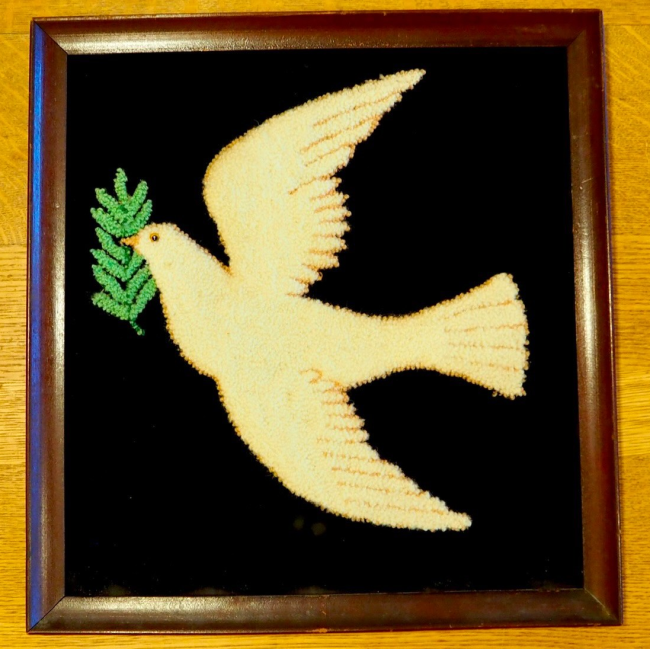
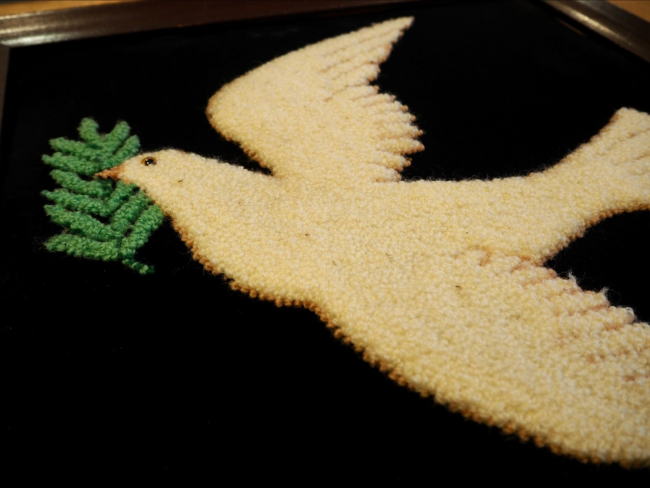
The camp was officially non-religious, though as part of their mission to impart a kind of cultural yidishkayt, campers did light Shabbos candles and recite blessings. There were also newly devised rituals that were celebrated at camp. At the end of each summer, Boiberik staged an elaborate pageant, the Felker yontef (Festival of nations). As part of the festivities, campers dressed up in the costume of many different peoples. Each group would perform, and they would all come together with wishes for world peace. The photographs below of the Felker yontef were taken in the 1930s and come from Roslyn Betty Snyder Katz by way of her son, Neal Katz.
“He didn’t want the children to assimilate. He wanted them to fall in love with Jewish culture.”
Unlike its peer Yiddishist summer camps, such as Kinderland and Kinder Ring, Boiberik was not aligned with any political party. As Yiddishist and Boiberikaner, Itzik Gottesman, describes in an interview for the Wexler Oral History Project, the camp’s founder, Leibush Lehrer, “wanted to create original ceremonies and rituals for the campers who were not religious or traditional” because “he didn’t want the children to assimilate. He wanted them to fall in love with Jewish culture.”
A bilingual plaque in honor of Leibush Lehrer highlights his impact on generations of campers. Formerly in the auditorium (re-named in honor of the former director), the dedication reads, in English: “In memory of Leibush Lehrer (z’l), molder of Camp Boiberik, director 1919-1964, educator, scholar and exponent of the educational philosophy of the Sholem Aleichem Folk Schools. This building is hereby named the Leibush Lehrer Auditorium. –July 10, 1965”
In Yiddish, Lehrer is credited as the “shafer” of Boiberik, which is translated as “molder,” rather than a more literal “creator” or “founder.” This memorial plaque and its emphasis on Lehrer’s enduring impact on the camp reflects Lehrer’s role in truly shaping the Boiberik project. He saw the immersive environment of summer camp as an ideal setting in which to instill a love of yidishkayt in new generations of American-born Jews, even as fewer and fewer campers arrived with substantial Yiddish knowledge from home.
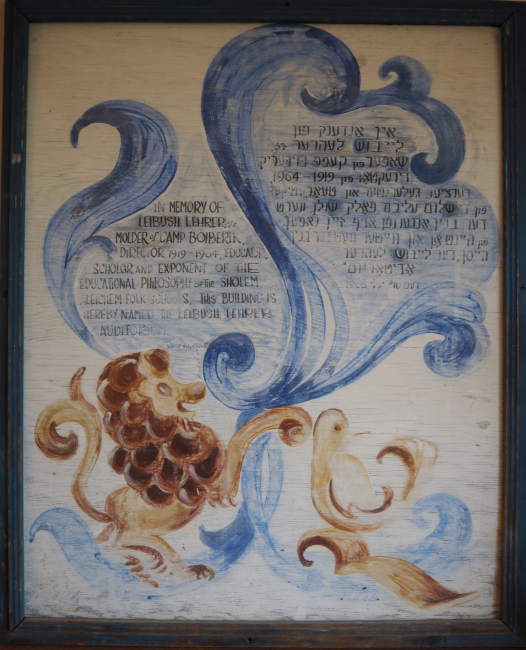
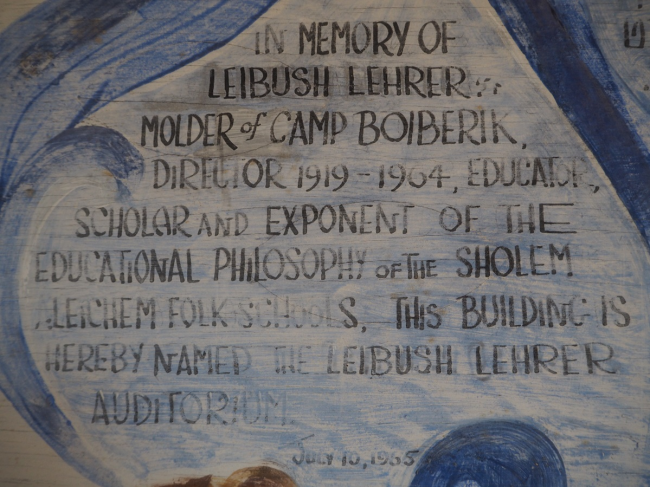
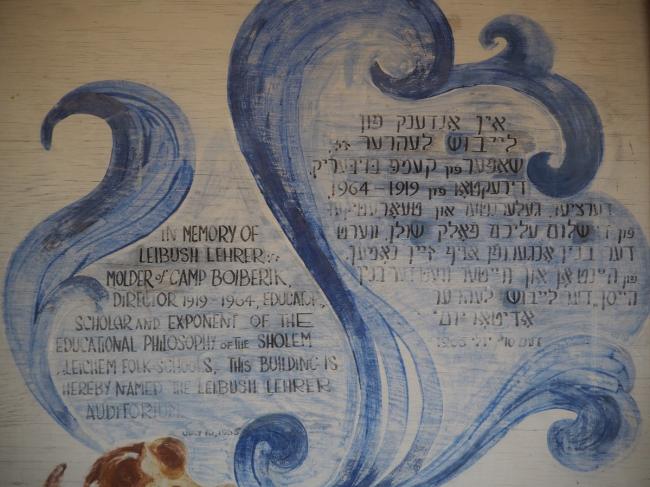
These artifacts and the memories and stories that accompany them help us to piece together one vibrant setting of Yiddish life and community in the US. Though Boiberik closed its doors in 1979, the question of how to impart Jewish identity, values, and language under the pressures of assimilation continues. Camp Boiberik and its history illustrate the notable capacity summer camp possesses as a place for cultural transmission—with books and ball-playing.
—Sonia Bloom, July 2022
Sonia Bloom is the 2021-22 Yiddish Education and Translation Initiatives fellow at the Yiddish Book Center. She spent many summers as a camper and counselor at Kinderland, a progressive, secular Jewish camp in Tolland, Massachusetts.
Hero Image: Two postcards from Camp Boiberik in the 1950s from the Moshe Kligsberg Collection at YIVO. Thank you to Brian Gocial for sharing.

